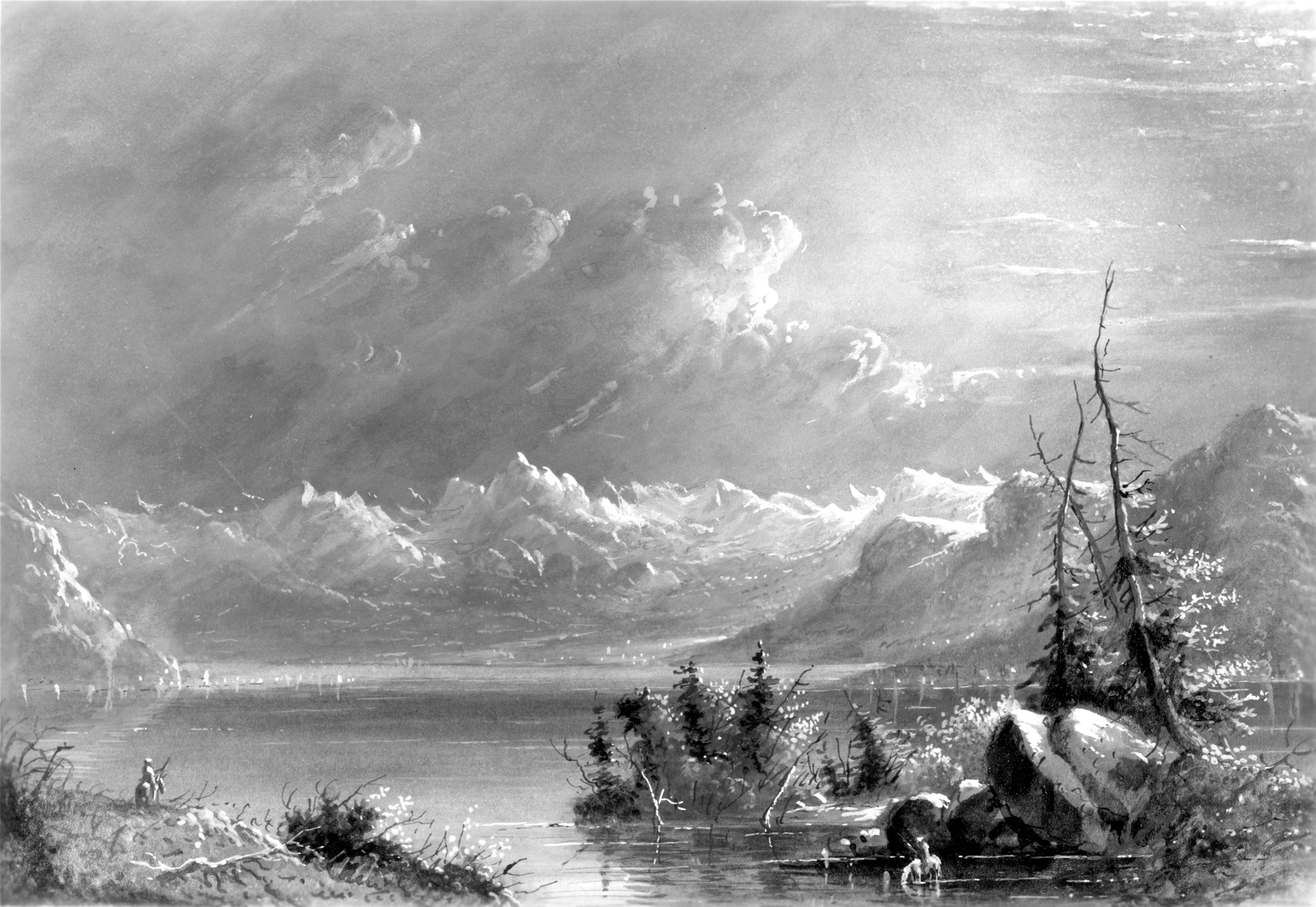Lake Scene - Rocky Mts.
(18th and 19th Centuries )
Extracts from Alfred Jacob Miller’s original text, which accompanied his images of Native Americans, are included below for reference.
"In the immediate foreground are groups of Mountain Fir, Pines, and other hardy trees. To the right bold promontories from the bosom of the Lake, consisting of rock interspersed with a growth of stunted trees,- beyond these and at the upper part of the Lake ranges of mountains rise, one above the other, terminating ultimately in pyramidal peaks. In viewing them, the first comparison that strikes the observer is that of a stormy sea, suddenly arrested and congealed into snow and ice - being thus transfixed forever. Atmospheric effects combined with the light of the sun change their appearance through the day. In the morning they glitter like frosted silver, while under a warm sunset they partake of a rosey tint;- during a storm they have a dark and forbidden aspect, but at mid-day under a clear sky, they are 'robed in an azure hue';- under any light however they are wondrous and sublime;- Cold and pulseless must be the heart of him who can view such a scene with indifference - verily he is not to be envied." A.J. Miller, extracted from "The West of Alfred Jacob Miller" (1837).
In July 1858 William T. Walters commissioned 200 watercolors at twelve dollars apiece from Baltimore born artist Alfred Jacob Miller. These paintings were each accompanied by a descriptive text, and were delivered in installments over the next twenty-one months and ultimately were bound in three albums. Transcriptions of field-sketches drawn during the 1837 expedition that Miller had undertaken to the annual fur-trader's rendezvous in the Green River Valley (in what is now western Wyoming), these watercolors are a unique record of the closing years of the western fur trade.
Provenance
Provenance (from the French provenir, 'to come from/forth') is the chronology of the ownership, custody, or location of a historical object. Learn more about provenance at the Walters.
William T. Walters, Baltimore, 1858-1860, by commission; Henry Walters, Baltimore, 1894, by inheritance; Walters Art Museum, 1931, by bequest.
Geographies
USA
(Place of Origin)
USA, Rocky Mountains (Place Depicted)
Measurements
H: 7 3/4 x W: 11 3/8 in. (19.7 x 28.9 cm)
Credit Line
Commissioned by William T. Walters, 1858-1860
Location in Museum
Not on view
Accession Number
In libraries, galleries, museums, and archives, an accession number is a unique identifier assigned to each object in the collection.
In libraries, galleries, museums, and archives, an accession number is a unique identifier assigned to each object in the collection.
37.1940.172







